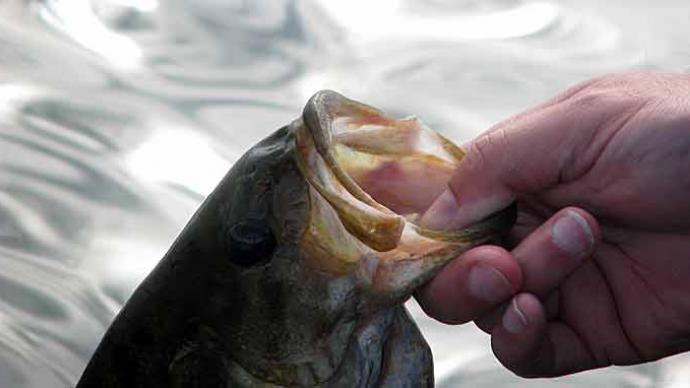Many anglers in the Northwest consider the postspawn a difficult time to catch bass. And, without a doubt, it can be a pretty tough. The bass are in a transition period, moving from spawning coves and flats to summer feeding areas. This means that numbers of fish can be very difficult to locate.
Too, the bass are also just finishing the rigors of the spawn, they're tired, and may need some extra effort and a few different techniques to entice them to strike a lure for a few days. Lure presentations have to change to match the new locations and feeding habits of postspawn bass. I have several techniques that, over the years, have been successful for me on locating and catching postspawn bass here in the Pacific Northwest.
Most of our lakes on the west side of the Cascade Mountains have Elodea weeds, and the weeds are important to catching postspawn bass. The bass seek out clean spots in the backs of coves to spawn. After the females drop their eggs they will move into deeper water, but many stay close to the nest for a few days. At this time, look for any isolated cover close to the spawning areas: it could be piling poles, docks, downed trees or most anything that provides some cover. I have seen several big postspawn bass move under one particular dock that has a large clean spot under it. But remember, it needs to be a spot close to a spawning area. These areas are either the backs of coves, on flats, or even in other small cuts that are close to deep water.
My most successful method to catch these fish is to deadstick a Fluke or Sluggo-type plastic lure. I believe most people try to work this type of lure too much, especially in the postspawn period. This is a simple technique that requires patience. After you cast to the target, let the Fluke or Senko sink on a slack line and do not move it for as long as you can stand it - that's usually about ten seconds for most anglers. I will give the bait one small twitch and wait again. I use a G-Loomis 843IMX or a 904IMX casting rod and 17-to 20-pound fluorocarbon line. The fluorocarbon line sinks better and gives you better control of the lure. Flukes sink very slowly and some days that is what works the best.
Yamamoto Senkos, because of their salt content, fall faster and it seems the longer you leave them motionless on the bottom, the more effective they are. I usually have both baits rigged, and alternate between them until I develop confidence that one lure or the other is getting more strikes.
After the spawn, it takes two weeks or longer and the bass will begin to migrate to the outside edges of the Elodea weeds. They spend the summer feeding on these edges in 14 to 20 feet of water. The bass will congregate on irregular features on this weed edge like little points or cuts. Then they will move up onto the weed mat to feed in low-light periods. When the fish migrate to the mats, are the times when the side-to-side motion of the Zara Spook is dynamite. I don't know why postspawn females are so vulnerable to this technique, but I am convinced that this is definitely the time to "walk the dog" with your topwater lures.
There is no better bait to begin the day with than a topwater, and I usually start out with a Spook in low light and move to my dead sticking later in the day.
Elodea growth is controlled by light penetration and water depth. In major spawning coves, the Elodea edge may be several hundred feet from the back of the cove. For that reason, explore the cove to find the places the grasses grow. You have to move out until the depth increases to the point that the elodea won't grow.
In most coves, the depth increases slowly and the weeds tend to have more of a feathered edge, with small scattered clumps of weeds along the edge.
All the bass do not spawn in these areas though, and will spawn all over the lake. Many of these areas drop off quickly and the weed line is only a few feet from the bank. The weeds in these spots act more like a wall than just grass, because the depth increases so rapidly. The bass will not be concentrated along these edges, but if you fish long stretches of it you will catch some good bass. Topwater presentations works well for this type of bank early and late, but my deadsticking method is too slow to cover this much area. It would literally take all day to cover one long bank.
The method I prefer in this situation is ripping big jerkbaits. The big postspawn females can't stand a big jerkbait right after they finish the rigors of spawning. You can cover long weed lines effectively and pick off those fish that spawned in some little pocket along the weed line. Many jerkbaits work well as long as they are the larger size (5- to 7-inch baits seem to be the most effective). Suspending lures are the most effective for me, and most bass hit when you pause the lure. Vary your retrieve and let the bass tell you what works best that day.
These are my favorite postspawn methods and I am confident they will work for you. See you on the lake.
Reprinted with permission from Bass West Magazine




